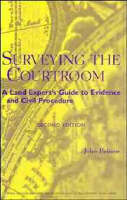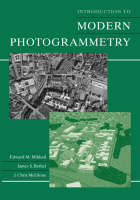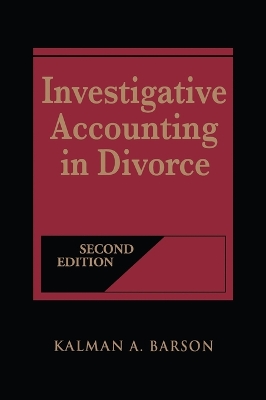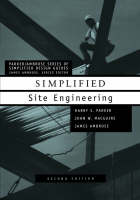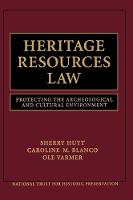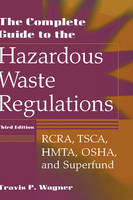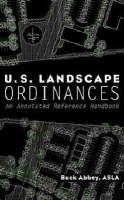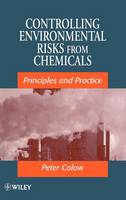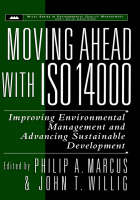Water Boundaries
 -15%
portes grátis
-15%
portes grátis
Water Boundaries
Demystifying Land Boundaries Adjacent to Tidal or Navigable Waters
Flushman, Bruce S.
John Wiley & Sons Inc
01/2002
448
Dura
Inglês
9780471403913
15 a 20 dias
818
Descrição não disponível.
Preface xvii
Acknowledgements xxvii
Table of Authorities xxix
1 The Basics of Land Title 1
1.1 Introduction 1
1.2 United States' Acquisition of the Public Domain 3
1.3 Recognition of Title Granted by Prior Sovereigns 4
1.4 The Public Domain and the United States' Survey of the Public Lands 9
1.5 Authority to Dispose of Public Lands 15
1.6 Public Land Dispositions - In General 16
1.7 Swamp and Overflowed Land Grant to the States 17
1.8 State Sovereign Lands 23
1.9 Grants of State Lands 25
1.10 Limitations on State Disposal of Lands Adjacent to Tidal and Navigable Waters 26
1.11 Adverse Possession 35
1.12 Agreed Boundaries 38
1.13 Estoppel 39
1.14 Adverse Possession, Estoppel and Like Doctrines Inapplicability to Sovereign Lands or Land Held in
Trust 39
1.15 Exception: When Estoppel May Be Applicable to the Sovereign 42
1.16 Chains of Title 44
2 What is the Choice-of-Law 46
2.1 Introduction 46
2.2 Interstate Political Boundary 49
2.3 Interstate Boundaries - Private Titles and Boundaries 51
2.4 Land Title and Boundary Disputes - In General 53
2.5 Land Title and Boundary Disputes When the United States Is Not a Disputing Landowner 54
2.6 Land Title and Boundary Disputes When the United States Is a Disputing Landowner 56
2.7 Later Cases 62
2.8 Effects of These Choice-of-Law Cases in Other Situations 64
3 Basic Legal Principles Defining Property Boundary Movement 68
3.1 Introduction 68
3.2 Variable Nature of Title and Boundary Disputes 70
3.3 Importance of the Location of the Property Boundary Along Tidal or Navigable Waterways 71
3.4 Ordinary High-Water Mark Property Boundary - In General 73
3.5 Purpose of the Ordinary High-Water Mark - To Separate Arable from Nonarable Lands 75
3.6 Definition of the Ordinary High-Water Mark 78
3.7 Illustration of the Components of the Dynamic Ordinary High-Water Mark 78
3.8 Surveying Techniques to Locate the Ordinary High-Water Mark - Meander Lines 81
3.9 Exceptions to Rule - When a Meander Line Can Be treated as a Property Boundary 87
3.10 Basic Legal Terms Describing the Process of Property Boundary Movement 90
3.11 Legal Terms Describing the Process of Change in Physical Location 92
3.12 Property Boundary Consequences of a Change in Geographic Location of the Boundary Watercourse 94
3.13 Presumptions and Burden of Proof in Title and Boundary Litigation 99
4 Property Boundary Determination Along the Open Ocean Coast 101
4.1 Introduction 101
4.2 Early Case Discussion of the Physical Indicia of the Location of the Ordinary High-Water Mark 104
4.3 Introduction of Tidal Measurements to Physically Locate the Ordinary High-Water Mark 105
4.4 Use of Indicia Other Than Tidal Measurements - Vegetation or Erosion Lines 107
4.5 Refinement of the Use of Tidal Measurements as the Physical Indicia of the Ordinary High-Water Mark
108
4.6 Explanation of the Tides, Technical Terms and Expressions 110
4.7 The "Neap Tides" Confusion 114
4.8 Foundation of Tidal Datums 115
4.9 Tidal Datums 117
4.10 Mean High-Water Line Adopted as the Physical Location of the Ordinary High-Water - The Borax
Cases 119
4.11 The California Aberration Dispelled - The Kent Estate Case 122
4.12 The Location of the Ordinary Low-Water Mark 122
4.13 The Open Coast Mean High-Water Line - Fluctuation of the Landform 126
4.14 Property Boundary Effect of the Geographic Movement of the Open Coast Shoreline 129
4.15 Effect of Presumptions on Coastal Property Boundaries 134
4.16 Examples of types of Proof in Open Coast Property Title and Boundary Litigation 135
4.17 Effect of the Burden of Proof on the Outcome of Coastal Title and Property Boundary Litigation 138
5 Property Boundary Determination in Estuarine Areas 141
5.1 Introduction 141
5.2 Difficulty and Confusion in Title and Boundary Determination in Tidal Marshes 147
5.3 Title Derivation of Tidal Marshlands 148
5.4 Means to Remedy Uncertainties of Title to Tidal Marshlands 158
5.5 Mean High-Water Line - The Physical Location of the Ordinary High-Water Mark Property Boundary in
Tidal Marshes 168
5.6 Legal Character of Tidal Marshlands Determined at the Time of the Swamp Lands Act Grant;
Customary Property Boundary Principles Determine Effect of Change in Physical Location of Ordinary High-
Water Mark 170
5.7 The Tidal Marsh Regime and Changes to That Regime 170
5.8 Property Boundary Effect and Changes in the Tide Marsh Regime 172
5.9 Proof of the Legal Character of Tidal Marshes and the Physical Location of the Historic Ordinary High-
Water Mark 177
6 Property Boundary Determination Along and in Tidal River Regimes 189
6.1 Introduction 189
6.2 The Delta Regime and Delta Meadows 195
6.3 The Impact of Human Activities on the Data 198
6.4 The Impact of Human Activities on Delta Meadows 200
6.5 Title to Delta Marshlands 201
6.6 Tidality of the Adjacent Watercourse - Consequences and Proof 204
6.7 The Impact of Property Boundary Movement Principles 208
6.8 Proof of the Physical Location of the Historic Ordinary High-Water Mark - Use of USGS Maps 209
6.9 Proof of the Physical Location of the Historic Ordinary High-Water Mark - Use of Physical
Measurements 210
6.10 Concluding Thoughts and Suggestions 230
7 Property Boundary Determination Along and in Navigable, Nontidal rivers and Streams Regimes 232
7.1 Introduction 232
7.2 The Matter of Navigability 235
7.3 Property Boundary Consequences of River Movement - In General 246
7.4 Rules to Avoid Uncertainty in Deciding the Property Boundary Consequences of River Movement 246
7.5 Property Boundary Consequences of River Movement - Accretion as Compared with Avulsion 252
7.6 Impact of the Burden of Proof on the Property Boundary Consequences of River Movement 263
7.7 The "True" Meaning of "Gradual and Imperceptible" 264
7.8 Significance of the Cause of River's Change in Geographic Location on the Property Boundary 268
7.9 Reemergence 271
7.10 Physical Indicia of the Ordinary High-Water Mark in a Riverine Environment 272
7.11 Physical Indicia of the Ordinary Low-Water Mark in a Riverine Environment 277
7.12 Proof in a Riverine Environment - Case Studies 278
8 Property Boundary Determination Along Navigable Lakes 282
8.1 Introduction 282
8.2 Character of Title to the Beds of Navigable Lakes 285
8.3 Resolution of the Quality and Character of State Title to the Beds of Navigable Lakes 287
8.4 Navigability of Lakes 291
8.5 What is a Lake? 293
8.6 Location of the Ordinary High-Water Mark Property Boundary of Littoral Lands 295
8.7 Vegetation/Erosion Line Test 301
8.8 Physical Indicia of Ordinary Low-Water Mark Property Boundary of Littoral Lands 307
8.9 Property Boundary Consequences of Littoral Shoreline Changes - In General 311
8.10 The Mono Lake Recession Case - Application of the So-Called Federal Common Law Rule 311
8.11 Proof in Lake Boundary and Title Cases 321
Glossary 326
Appendix A 338
Appendix B 350
Index 373
Acknowledgements xxvii
Table of Authorities xxix
1 The Basics of Land Title 1
1.1 Introduction 1
1.2 United States' Acquisition of the Public Domain 3
1.3 Recognition of Title Granted by Prior Sovereigns 4
1.4 The Public Domain and the United States' Survey of the Public Lands 9
1.5 Authority to Dispose of Public Lands 15
1.6 Public Land Dispositions - In General 16
1.7 Swamp and Overflowed Land Grant to the States 17
1.8 State Sovereign Lands 23
1.9 Grants of State Lands 25
1.10 Limitations on State Disposal of Lands Adjacent to Tidal and Navigable Waters 26
1.11 Adverse Possession 35
1.12 Agreed Boundaries 38
1.13 Estoppel 39
1.14 Adverse Possession, Estoppel and Like Doctrines Inapplicability to Sovereign Lands or Land Held in
Trust 39
1.15 Exception: When Estoppel May Be Applicable to the Sovereign 42
1.16 Chains of Title 44
2 What is the Choice-of-Law 46
2.1 Introduction 46
2.2 Interstate Political Boundary 49
2.3 Interstate Boundaries - Private Titles and Boundaries 51
2.4 Land Title and Boundary Disputes - In General 53
2.5 Land Title and Boundary Disputes When the United States Is Not a Disputing Landowner 54
2.6 Land Title and Boundary Disputes When the United States Is a Disputing Landowner 56
2.7 Later Cases 62
2.8 Effects of These Choice-of-Law Cases in Other Situations 64
3 Basic Legal Principles Defining Property Boundary Movement 68
3.1 Introduction 68
3.2 Variable Nature of Title and Boundary Disputes 70
3.3 Importance of the Location of the Property Boundary Along Tidal or Navigable Waterways 71
3.4 Ordinary High-Water Mark Property Boundary - In General 73
3.5 Purpose of the Ordinary High-Water Mark - To Separate Arable from Nonarable Lands 75
3.6 Definition of the Ordinary High-Water Mark 78
3.7 Illustration of the Components of the Dynamic Ordinary High-Water Mark 78
3.8 Surveying Techniques to Locate the Ordinary High-Water Mark - Meander Lines 81
3.9 Exceptions to Rule - When a Meander Line Can Be treated as a Property Boundary 87
3.10 Basic Legal Terms Describing the Process of Property Boundary Movement 90
3.11 Legal Terms Describing the Process of Change in Physical Location 92
3.12 Property Boundary Consequences of a Change in Geographic Location of the Boundary Watercourse 94
3.13 Presumptions and Burden of Proof in Title and Boundary Litigation 99
4 Property Boundary Determination Along the Open Ocean Coast 101
4.1 Introduction 101
4.2 Early Case Discussion of the Physical Indicia of the Location of the Ordinary High-Water Mark 104
4.3 Introduction of Tidal Measurements to Physically Locate the Ordinary High-Water Mark 105
4.4 Use of Indicia Other Than Tidal Measurements - Vegetation or Erosion Lines 107
4.5 Refinement of the Use of Tidal Measurements as the Physical Indicia of the Ordinary High-Water Mark
108
4.6 Explanation of the Tides, Technical Terms and Expressions 110
4.7 The "Neap Tides" Confusion 114
4.8 Foundation of Tidal Datums 115
4.9 Tidal Datums 117
4.10 Mean High-Water Line Adopted as the Physical Location of the Ordinary High-Water - The Borax
Cases 119
4.11 The California Aberration Dispelled - The Kent Estate Case 122
4.12 The Location of the Ordinary Low-Water Mark 122
4.13 The Open Coast Mean High-Water Line - Fluctuation of the Landform 126
4.14 Property Boundary Effect of the Geographic Movement of the Open Coast Shoreline 129
4.15 Effect of Presumptions on Coastal Property Boundaries 134
4.16 Examples of types of Proof in Open Coast Property Title and Boundary Litigation 135
4.17 Effect of the Burden of Proof on the Outcome of Coastal Title and Property Boundary Litigation 138
5 Property Boundary Determination in Estuarine Areas 141
5.1 Introduction 141
5.2 Difficulty and Confusion in Title and Boundary Determination in Tidal Marshes 147
5.3 Title Derivation of Tidal Marshlands 148
5.4 Means to Remedy Uncertainties of Title to Tidal Marshlands 158
5.5 Mean High-Water Line - The Physical Location of the Ordinary High-Water Mark Property Boundary in
Tidal Marshes 168
5.6 Legal Character of Tidal Marshlands Determined at the Time of the Swamp Lands Act Grant;
Customary Property Boundary Principles Determine Effect of Change in Physical Location of Ordinary High-
Water Mark 170
5.7 The Tidal Marsh Regime and Changes to That Regime 170
5.8 Property Boundary Effect and Changes in the Tide Marsh Regime 172
5.9 Proof of the Legal Character of Tidal Marshes and the Physical Location of the Historic Ordinary High-
Water Mark 177
6 Property Boundary Determination Along and in Tidal River Regimes 189
6.1 Introduction 189
6.2 The Delta Regime and Delta Meadows 195
6.3 The Impact of Human Activities on the Data 198
6.4 The Impact of Human Activities on Delta Meadows 200
6.5 Title to Delta Marshlands 201
6.6 Tidality of the Adjacent Watercourse - Consequences and Proof 204
6.7 The Impact of Property Boundary Movement Principles 208
6.8 Proof of the Physical Location of the Historic Ordinary High-Water Mark - Use of USGS Maps 209
6.9 Proof of the Physical Location of the Historic Ordinary High-Water Mark - Use of Physical
Measurements 210
6.10 Concluding Thoughts and Suggestions 230
7 Property Boundary Determination Along and in Navigable, Nontidal rivers and Streams Regimes 232
7.1 Introduction 232
7.2 The Matter of Navigability 235
7.3 Property Boundary Consequences of River Movement - In General 246
7.4 Rules to Avoid Uncertainty in Deciding the Property Boundary Consequences of River Movement 246
7.5 Property Boundary Consequences of River Movement - Accretion as Compared with Avulsion 252
7.6 Impact of the Burden of Proof on the Property Boundary Consequences of River Movement 263
7.7 The "True" Meaning of "Gradual and Imperceptible" 264
7.8 Significance of the Cause of River's Change in Geographic Location on the Property Boundary 268
7.9 Reemergence 271
7.10 Physical Indicia of the Ordinary High-Water Mark in a Riverine Environment 272
7.11 Physical Indicia of the Ordinary Low-Water Mark in a Riverine Environment 277
7.12 Proof in a Riverine Environment - Case Studies 278
8 Property Boundary Determination Along Navigable Lakes 282
8.1 Introduction 282
8.2 Character of Title to the Beds of Navigable Lakes 285
8.3 Resolution of the Quality and Character of State Title to the Beds of Navigable Lakes 287
8.4 Navigability of Lakes 291
8.5 What is a Lake? 293
8.6 Location of the Ordinary High-Water Mark Property Boundary of Littoral Lands 295
8.7 Vegetation/Erosion Line Test 301
8.8 Physical Indicia of Ordinary Low-Water Mark Property Boundary of Littoral Lands 307
8.9 Property Boundary Consequences of Littoral Shoreline Changes - In General 311
8.10 The Mono Lake Recession Case - Application of the So-Called Federal Common Law Rule 311
8.11 Proof in Lake Boundary and Title Cases 321
Glossary 326
Appendix A 338
Appendix B 350
Index 373
Este título pertence ao(s) assunto(s) indicados(s). Para ver outros títulos clique no assunto desejado.
guide; offers; practical; watercourse; property; lands; readable; location; explanations; boundaries; issues; legal; adjacent; basics; examination; movement; land title; clear; principles; range; different watercourse; determination
Preface xvii
Acknowledgements xxvii
Table of Authorities xxix
1 The Basics of Land Title 1
1.1 Introduction 1
1.2 United States' Acquisition of the Public Domain 3
1.3 Recognition of Title Granted by Prior Sovereigns 4
1.4 The Public Domain and the United States' Survey of the Public Lands 9
1.5 Authority to Dispose of Public Lands 15
1.6 Public Land Dispositions - In General 16
1.7 Swamp and Overflowed Land Grant to the States 17
1.8 State Sovereign Lands 23
1.9 Grants of State Lands 25
1.10 Limitations on State Disposal of Lands Adjacent to Tidal and Navigable Waters 26
1.11 Adverse Possession 35
1.12 Agreed Boundaries 38
1.13 Estoppel 39
1.14 Adverse Possession, Estoppel and Like Doctrines Inapplicability to Sovereign Lands or Land Held in
Trust 39
1.15 Exception: When Estoppel May Be Applicable to the Sovereign 42
1.16 Chains of Title 44
2 What is the Choice-of-Law 46
2.1 Introduction 46
2.2 Interstate Political Boundary 49
2.3 Interstate Boundaries - Private Titles and Boundaries 51
2.4 Land Title and Boundary Disputes - In General 53
2.5 Land Title and Boundary Disputes When the United States Is Not a Disputing Landowner 54
2.6 Land Title and Boundary Disputes When the United States Is a Disputing Landowner 56
2.7 Later Cases 62
2.8 Effects of These Choice-of-Law Cases in Other Situations 64
3 Basic Legal Principles Defining Property Boundary Movement 68
3.1 Introduction 68
3.2 Variable Nature of Title and Boundary Disputes 70
3.3 Importance of the Location of the Property Boundary Along Tidal or Navigable Waterways 71
3.4 Ordinary High-Water Mark Property Boundary - In General 73
3.5 Purpose of the Ordinary High-Water Mark - To Separate Arable from Nonarable Lands 75
3.6 Definition of the Ordinary High-Water Mark 78
3.7 Illustration of the Components of the Dynamic Ordinary High-Water Mark 78
3.8 Surveying Techniques to Locate the Ordinary High-Water Mark - Meander Lines 81
3.9 Exceptions to Rule - When a Meander Line Can Be treated as a Property Boundary 87
3.10 Basic Legal Terms Describing the Process of Property Boundary Movement 90
3.11 Legal Terms Describing the Process of Change in Physical Location 92
3.12 Property Boundary Consequences of a Change in Geographic Location of the Boundary Watercourse 94
3.13 Presumptions and Burden of Proof in Title and Boundary Litigation 99
4 Property Boundary Determination Along the Open Ocean Coast 101
4.1 Introduction 101
4.2 Early Case Discussion of the Physical Indicia of the Location of the Ordinary High-Water Mark 104
4.3 Introduction of Tidal Measurements to Physically Locate the Ordinary High-Water Mark 105
4.4 Use of Indicia Other Than Tidal Measurements - Vegetation or Erosion Lines 107
4.5 Refinement of the Use of Tidal Measurements as the Physical Indicia of the Ordinary High-Water Mark
108
4.6 Explanation of the Tides, Technical Terms and Expressions 110
4.7 The "Neap Tides" Confusion 114
4.8 Foundation of Tidal Datums 115
4.9 Tidal Datums 117
4.10 Mean High-Water Line Adopted as the Physical Location of the Ordinary High-Water - The Borax
Cases 119
4.11 The California Aberration Dispelled - The Kent Estate Case 122
4.12 The Location of the Ordinary Low-Water Mark 122
4.13 The Open Coast Mean High-Water Line - Fluctuation of the Landform 126
4.14 Property Boundary Effect of the Geographic Movement of the Open Coast Shoreline 129
4.15 Effect of Presumptions on Coastal Property Boundaries 134
4.16 Examples of types of Proof in Open Coast Property Title and Boundary Litigation 135
4.17 Effect of the Burden of Proof on the Outcome of Coastal Title and Property Boundary Litigation 138
5 Property Boundary Determination in Estuarine Areas 141
5.1 Introduction 141
5.2 Difficulty and Confusion in Title and Boundary Determination in Tidal Marshes 147
5.3 Title Derivation of Tidal Marshlands 148
5.4 Means to Remedy Uncertainties of Title to Tidal Marshlands 158
5.5 Mean High-Water Line - The Physical Location of the Ordinary High-Water Mark Property Boundary in
Tidal Marshes 168
5.6 Legal Character of Tidal Marshlands Determined at the Time of the Swamp Lands Act Grant;
Customary Property Boundary Principles Determine Effect of Change in Physical Location of Ordinary High-
Water Mark 170
5.7 The Tidal Marsh Regime and Changes to That Regime 170
5.8 Property Boundary Effect and Changes in the Tide Marsh Regime 172
5.9 Proof of the Legal Character of Tidal Marshes and the Physical Location of the Historic Ordinary High-
Water Mark 177
6 Property Boundary Determination Along and in Tidal River Regimes 189
6.1 Introduction 189
6.2 The Delta Regime and Delta Meadows 195
6.3 The Impact of Human Activities on the Data 198
6.4 The Impact of Human Activities on Delta Meadows 200
6.5 Title to Delta Marshlands 201
6.6 Tidality of the Adjacent Watercourse - Consequences and Proof 204
6.7 The Impact of Property Boundary Movement Principles 208
6.8 Proof of the Physical Location of the Historic Ordinary High-Water Mark - Use of USGS Maps 209
6.9 Proof of the Physical Location of the Historic Ordinary High-Water Mark - Use of Physical
Measurements 210
6.10 Concluding Thoughts and Suggestions 230
7 Property Boundary Determination Along and in Navigable, Nontidal rivers and Streams Regimes 232
7.1 Introduction 232
7.2 The Matter of Navigability 235
7.3 Property Boundary Consequences of River Movement - In General 246
7.4 Rules to Avoid Uncertainty in Deciding the Property Boundary Consequences of River Movement 246
7.5 Property Boundary Consequences of River Movement - Accretion as Compared with Avulsion 252
7.6 Impact of the Burden of Proof on the Property Boundary Consequences of River Movement 263
7.7 The "True" Meaning of "Gradual and Imperceptible" 264
7.8 Significance of the Cause of River's Change in Geographic Location on the Property Boundary 268
7.9 Reemergence 271
7.10 Physical Indicia of the Ordinary High-Water Mark in a Riverine Environment 272
7.11 Physical Indicia of the Ordinary Low-Water Mark in a Riverine Environment 277
7.12 Proof in a Riverine Environment - Case Studies 278
8 Property Boundary Determination Along Navigable Lakes 282
8.1 Introduction 282
8.2 Character of Title to the Beds of Navigable Lakes 285
8.3 Resolution of the Quality and Character of State Title to the Beds of Navigable Lakes 287
8.4 Navigability of Lakes 291
8.5 What is a Lake? 293
8.6 Location of the Ordinary High-Water Mark Property Boundary of Littoral Lands 295
8.7 Vegetation/Erosion Line Test 301
8.8 Physical Indicia of Ordinary Low-Water Mark Property Boundary of Littoral Lands 307
8.9 Property Boundary Consequences of Littoral Shoreline Changes - In General 311
8.10 The Mono Lake Recession Case - Application of the So-Called Federal Common Law Rule 311
8.11 Proof in Lake Boundary and Title Cases 321
Glossary 326
Appendix A 338
Appendix B 350
Index 373
Acknowledgements xxvii
Table of Authorities xxix
1 The Basics of Land Title 1
1.1 Introduction 1
1.2 United States' Acquisition of the Public Domain 3
1.3 Recognition of Title Granted by Prior Sovereigns 4
1.4 The Public Domain and the United States' Survey of the Public Lands 9
1.5 Authority to Dispose of Public Lands 15
1.6 Public Land Dispositions - In General 16
1.7 Swamp and Overflowed Land Grant to the States 17
1.8 State Sovereign Lands 23
1.9 Grants of State Lands 25
1.10 Limitations on State Disposal of Lands Adjacent to Tidal and Navigable Waters 26
1.11 Adverse Possession 35
1.12 Agreed Boundaries 38
1.13 Estoppel 39
1.14 Adverse Possession, Estoppel and Like Doctrines Inapplicability to Sovereign Lands or Land Held in
Trust 39
1.15 Exception: When Estoppel May Be Applicable to the Sovereign 42
1.16 Chains of Title 44
2 What is the Choice-of-Law 46
2.1 Introduction 46
2.2 Interstate Political Boundary 49
2.3 Interstate Boundaries - Private Titles and Boundaries 51
2.4 Land Title and Boundary Disputes - In General 53
2.5 Land Title and Boundary Disputes When the United States Is Not a Disputing Landowner 54
2.6 Land Title and Boundary Disputes When the United States Is a Disputing Landowner 56
2.7 Later Cases 62
2.8 Effects of These Choice-of-Law Cases in Other Situations 64
3 Basic Legal Principles Defining Property Boundary Movement 68
3.1 Introduction 68
3.2 Variable Nature of Title and Boundary Disputes 70
3.3 Importance of the Location of the Property Boundary Along Tidal or Navigable Waterways 71
3.4 Ordinary High-Water Mark Property Boundary - In General 73
3.5 Purpose of the Ordinary High-Water Mark - To Separate Arable from Nonarable Lands 75
3.6 Definition of the Ordinary High-Water Mark 78
3.7 Illustration of the Components of the Dynamic Ordinary High-Water Mark 78
3.8 Surveying Techniques to Locate the Ordinary High-Water Mark - Meander Lines 81
3.9 Exceptions to Rule - When a Meander Line Can Be treated as a Property Boundary 87
3.10 Basic Legal Terms Describing the Process of Property Boundary Movement 90
3.11 Legal Terms Describing the Process of Change in Physical Location 92
3.12 Property Boundary Consequences of a Change in Geographic Location of the Boundary Watercourse 94
3.13 Presumptions and Burden of Proof in Title and Boundary Litigation 99
4 Property Boundary Determination Along the Open Ocean Coast 101
4.1 Introduction 101
4.2 Early Case Discussion of the Physical Indicia of the Location of the Ordinary High-Water Mark 104
4.3 Introduction of Tidal Measurements to Physically Locate the Ordinary High-Water Mark 105
4.4 Use of Indicia Other Than Tidal Measurements - Vegetation or Erosion Lines 107
4.5 Refinement of the Use of Tidal Measurements as the Physical Indicia of the Ordinary High-Water Mark
108
4.6 Explanation of the Tides, Technical Terms and Expressions 110
4.7 The "Neap Tides" Confusion 114
4.8 Foundation of Tidal Datums 115
4.9 Tidal Datums 117
4.10 Mean High-Water Line Adopted as the Physical Location of the Ordinary High-Water - The Borax
Cases 119
4.11 The California Aberration Dispelled - The Kent Estate Case 122
4.12 The Location of the Ordinary Low-Water Mark 122
4.13 The Open Coast Mean High-Water Line - Fluctuation of the Landform 126
4.14 Property Boundary Effect of the Geographic Movement of the Open Coast Shoreline 129
4.15 Effect of Presumptions on Coastal Property Boundaries 134
4.16 Examples of types of Proof in Open Coast Property Title and Boundary Litigation 135
4.17 Effect of the Burden of Proof on the Outcome of Coastal Title and Property Boundary Litigation 138
5 Property Boundary Determination in Estuarine Areas 141
5.1 Introduction 141
5.2 Difficulty and Confusion in Title and Boundary Determination in Tidal Marshes 147
5.3 Title Derivation of Tidal Marshlands 148
5.4 Means to Remedy Uncertainties of Title to Tidal Marshlands 158
5.5 Mean High-Water Line - The Physical Location of the Ordinary High-Water Mark Property Boundary in
Tidal Marshes 168
5.6 Legal Character of Tidal Marshlands Determined at the Time of the Swamp Lands Act Grant;
Customary Property Boundary Principles Determine Effect of Change in Physical Location of Ordinary High-
Water Mark 170
5.7 The Tidal Marsh Regime and Changes to That Regime 170
5.8 Property Boundary Effect and Changes in the Tide Marsh Regime 172
5.9 Proof of the Legal Character of Tidal Marshes and the Physical Location of the Historic Ordinary High-
Water Mark 177
6 Property Boundary Determination Along and in Tidal River Regimes 189
6.1 Introduction 189
6.2 The Delta Regime and Delta Meadows 195
6.3 The Impact of Human Activities on the Data 198
6.4 The Impact of Human Activities on Delta Meadows 200
6.5 Title to Delta Marshlands 201
6.6 Tidality of the Adjacent Watercourse - Consequences and Proof 204
6.7 The Impact of Property Boundary Movement Principles 208
6.8 Proof of the Physical Location of the Historic Ordinary High-Water Mark - Use of USGS Maps 209
6.9 Proof of the Physical Location of the Historic Ordinary High-Water Mark - Use of Physical
Measurements 210
6.10 Concluding Thoughts and Suggestions 230
7 Property Boundary Determination Along and in Navigable, Nontidal rivers and Streams Regimes 232
7.1 Introduction 232
7.2 The Matter of Navigability 235
7.3 Property Boundary Consequences of River Movement - In General 246
7.4 Rules to Avoid Uncertainty in Deciding the Property Boundary Consequences of River Movement 246
7.5 Property Boundary Consequences of River Movement - Accretion as Compared with Avulsion 252
7.6 Impact of the Burden of Proof on the Property Boundary Consequences of River Movement 263
7.7 The "True" Meaning of "Gradual and Imperceptible" 264
7.8 Significance of the Cause of River's Change in Geographic Location on the Property Boundary 268
7.9 Reemergence 271
7.10 Physical Indicia of the Ordinary High-Water Mark in a Riverine Environment 272
7.11 Physical Indicia of the Ordinary Low-Water Mark in a Riverine Environment 277
7.12 Proof in a Riverine Environment - Case Studies 278
8 Property Boundary Determination Along Navigable Lakes 282
8.1 Introduction 282
8.2 Character of Title to the Beds of Navigable Lakes 285
8.3 Resolution of the Quality and Character of State Title to the Beds of Navigable Lakes 287
8.4 Navigability of Lakes 291
8.5 What is a Lake? 293
8.6 Location of the Ordinary High-Water Mark Property Boundary of Littoral Lands 295
8.7 Vegetation/Erosion Line Test 301
8.8 Physical Indicia of Ordinary Low-Water Mark Property Boundary of Littoral Lands 307
8.9 Property Boundary Consequences of Littoral Shoreline Changes - In General 311
8.10 The Mono Lake Recession Case - Application of the So-Called Federal Common Law Rule 311
8.11 Proof in Lake Boundary and Title Cases 321
Glossary 326
Appendix A 338
Appendix B 350
Index 373
Este título pertence ao(s) assunto(s) indicados(s). Para ver outros títulos clique no assunto desejado.

